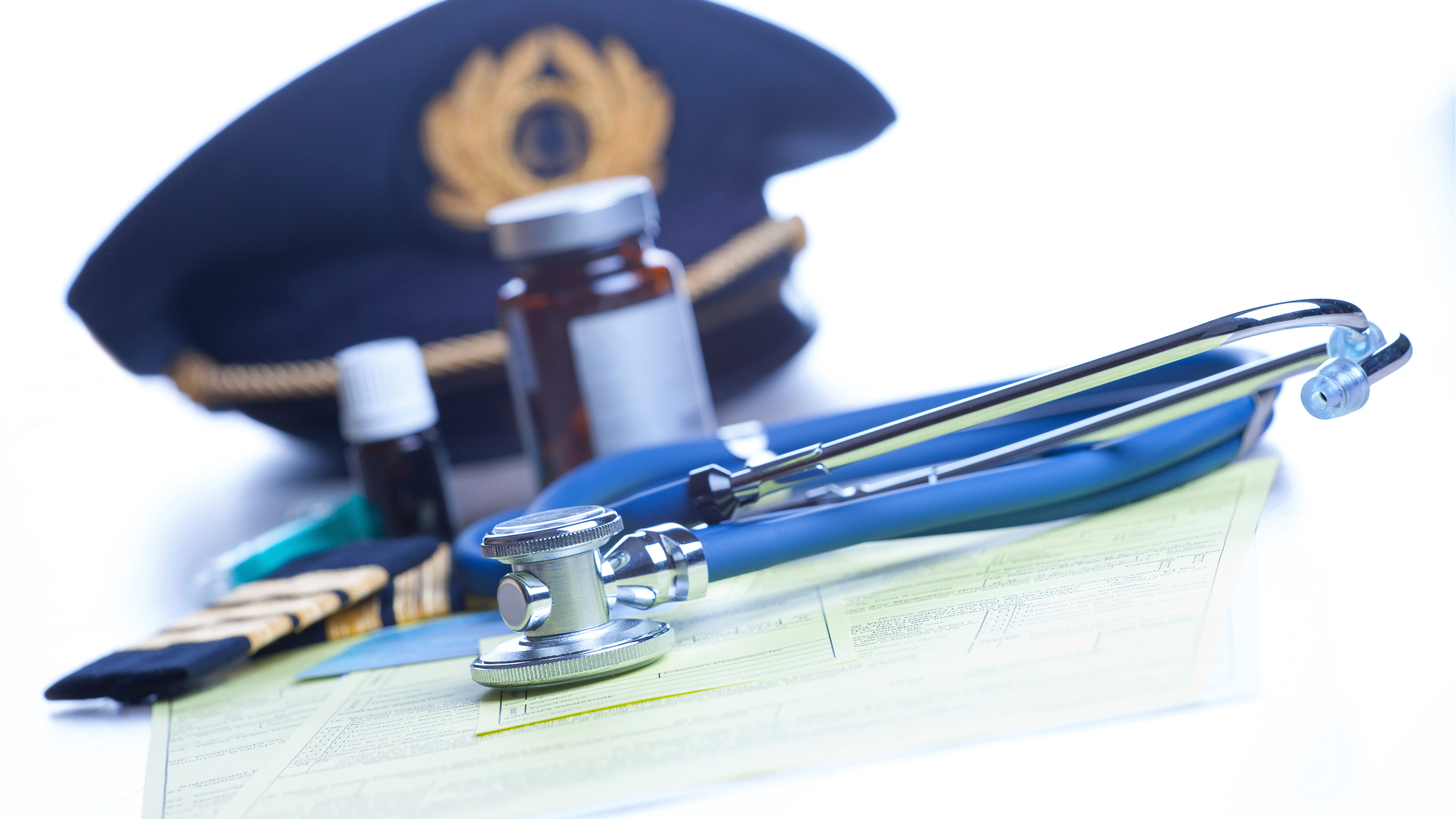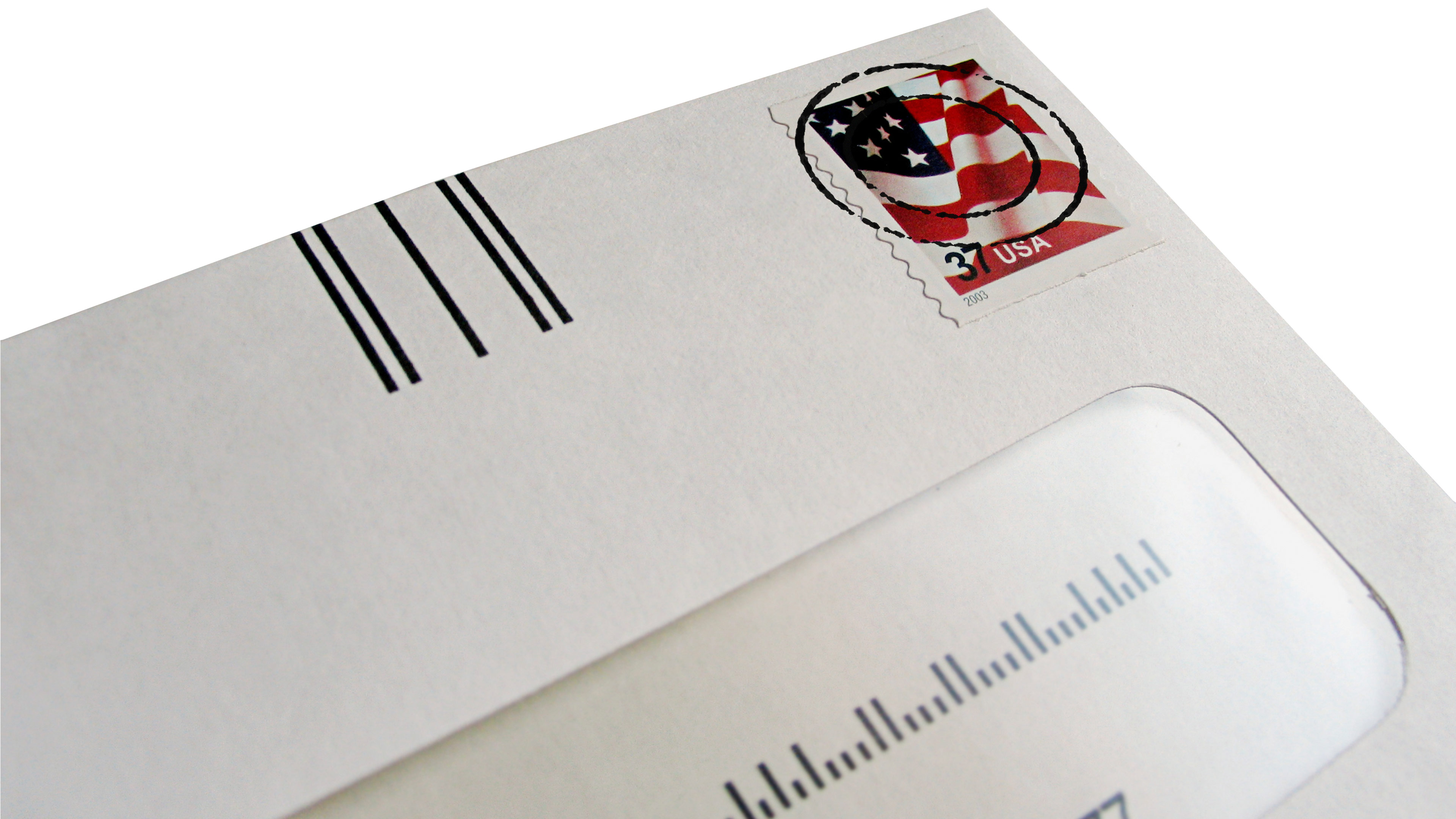Airman Medical Certification
Overview

The FAA Act of 1958 charged the federal government with promoting aviation and maintaining aviation safety standards. The FAA's Office of Aerospace Medicine regulates, among other things, airman medical certification standards. That includes structuring certification policies and processes to reflect current medical advancements.
Despite the government's efforts to streamline the review process and speed the issuance of medical certificates, ongoing administrative and technology challenges continue to result in lengthy delays for some pilots whose medical applications have to be reviewed by the Aerospace Medical Certification Division. Those delays notwithstanding, the U.S. FAA has the most progressive civil aviation medical certification standards in the world.
The Airman Medical Standards and Certification Procedures, FAR Part 67, is a maze of medical and legal language that is, in some respects, clear and concise, and, in others, very general and vague. Medically certificating pilots is a bureaucratic process, but the FAA also must consider the prevailing political and legal climate in the course of evaluating an individual's medical application. Aviation safety is foremost, and each applicant's medical history is evaluated on the basis of risk of incapacitation.
The airman medical standards are minimum standards. There is no practical way for all possible medical conditions to be considered in a regulatory standard. For that reason, the FAA develops certification policies that include baselines for different medical conditions that are weighed against the risk of incapacitation associated with that condition. That way, every applicant for a medical certificate who has a medical condition that requires review will receive consideration that is measured against the medical policy and on the merits of the individual's medical case history.
Let's take a look at the interior of FAR Part 67. Subpart A is general information, including certification of foreign airmen and an important authorization for access to the National Driver Register. Subparts B, C, and D include the minimum medical standards that must be met for first, second, and third class medical certificates.
The subparts are further divided by organ group including Eye, Ear, Nose, Throat, and Equilibrium, Mental, Neurologic, Cardiovascular, and General medical condition. Subpart E is Certification Procedures and includes the detailed description of special issuances that are required for pilot applicants who have disqualifying medical histories.
Updated March 2016
First, Second, and Third Class Certificates

The FAA issues three classes of medical certificates:
A first class medical is required for pilots who exercise airline transport pilot (ATP) privileges; that is, those flying scheduled airliners and other pilots whose employers require this level of certification. A first class medical is valid for ATP privileges for twelve months for pilots under age 40. Pilots who are age 40 and older must renew First class medical certificates every six months.
A Second class is required for pilots who fly commercially—in operations such as crop dusting, delivering canceled checks, or carrying passengers or cargo for hire. The Second class medical is valid for commercial privileges for 12 months.
A Third class medical certificate is appropriate for student pilots, recreational pilots, and private pilots who fly for pleasure or personal business (but not for hire). A third class medical is valid for 60 months for pilots under age 40, and 24 months for applicants who are age 40 or older.
Updated March 2017
Comparison of Classes of Medical Standards
| Medical Certificate | Class I | Class II | Class III |
| Type Pilot | Airline Transport | Commercial | Private, Student, Recreational |
| Duration | 6 months if age 40 or older; 12 months if under age 40 |
12 months | 2 years if age 40 or older; 5 years if less than 40 at exam |
| Distant Vision | 20/20 in each eye, with or without correction | 20/40 in each eye with or without correction |
|
| Intermediate Vision 32 inches-panel |
50 years and older 20/40 with or without correction |
50 years and older 20/40 with or without correction |
N/A |
| Near Vision 16 inches | 20/40 in each eye, with or without correction | ||
| Color Vision | Colors necessary for safe performance of airman duties | ||
| Hearing | Conversational voice at 6 feet with both ears, or audiometry | ||
| Blood Pressure | No standard. If medication required, will need cardiovascular workup. Current guideline maximum is 155/95. |
||
| EKG Electrocardiogram | At age 35, and yearly after 40 |
N/A | N/A |
| ENT | No disease causing vertigo or disturbance of speech or equilibrium | ||
Updated March 2017
Special Issuance Medical Certification

Medical regulations list the following 15 medical conditions as specifically disqualifying. If you report having any of them on your medical application, your AME cannot issue a medical certificate until it is cleared by the FAA under what's known as a special issuance authorization.
- Diabetes mellitus requiring oral hypoglycemic medication or insulin
- Angina pectoris
- Coronary heart disease that has been treated or, if untreated, that has been symptomatic or clinically significant
- Myocardial infarction
- Cardiac valve replacement
- Permanent cardiac pacemaker
- Heart replacement
- Psychosis
- Bipolar disorder
- Personality disorder that is severe enough to have repeatedly manifested itself by overt acts
- Substance dependence (including alcohol)
- Substance abuse
- Epilepsy
- Disturbance of consciousness and without satisfactory explanation of cause
- Transient loss of control of nervous system function(s) without satisfactory explanation of cause
A special issuance is a two-sided coin. It's great that the regulations offer a mechanism to offset the disqualifying conditions. The downside is that it's a discretionary issuance granted by the Federal Air Surgeon and comes with requirements for periodic interim medical reports and time limitations (usually 12 months) on the duration of the certificate, and it can be withdrawn anytime the FAA sees evidence of an "adverse" change in your condition.
You may hold a certificate that appears to be valid for up to 60 calendar months in accordance with FAR 61.23. In reality, though, the certificate is valid for only as long as the authorization is in force, and that's determined by the type of medical condition and the perceived risk of incapacitation that could result from the condition.
In addition to the time limitation, reissuance of the certificate will be based on additional testing that must be submitted to the FAA prior to the expiration date of the authorization. This might be a simple status report from your treating physician or a complete reexamination with comprehensive (and expensive) diagnostic testing. Additional limitations may be placed on the operational privileges of the certificate, such as limiting a second class medical holder to carrying passengers for hire only when part of a qualified two-pilot crew.
A special issuance is different from a waiver or Statement of Demonstrated Ability (SODA). Waivers are issued for static defects that are not likely to change. Useful vision in only one eye (monocular vision) is one condition for which a medical flight test might be used. There are several hundred pilots flying with monocular vision waivers. Upper or lower limb amputees can also qualify for a SODA with a flight test. Medical flight tests are sometimes conducted to demonstrate that an applicant can safely operate the aircraft.
The waiver becomes part of your medical certificate and shows that, although you don't necessarily meet the minimum standards to hold a medical certificate, you have satisfied the FAA that you can safely exercise the privileges of the certificate(s) you hold.
For special issuance consideration, the FAA will ask for medical information specific to the type of condition you had. Often, that first round of records will be sufficient for the FAA to make a decision. Sometimes, though, additional information is needed, especially if the first records you sent are incomplete or inconclusive, or if there are abnormal results indicated. You may get several letters over a period of months asking for more information before finally getting a decision. You will know exactly what information the FAA requires before you start the process. The doctors in Oklahoma City don't want to ask you for any more information than is necessary, but they also won't issue a certificate until they have a complete medical profile on you. Just be patient and expect a few bumps in the road along the way. The process can be frustrating and time consuming. The hassles notwithstanding, more than 30,000 pilots have been certified under special issuance.
Updated February 2015
Certification Tips

How to Minimize Problems with the Process
The FAA's Aerospace Medical Certification Division has made substantial improvements in the processing of deferred medical applications. However, delays can still be lengthy if your aviation medical examiner (AME) doesn't issue a medical certificate at the time of the examination.
One of the most common reasons for delays in the issuance of a medical certificate is the lack of adequate documentation about your medical condition. Anytime you report something new on the FAA medical application, including a new medical condition or medication, or visits to health professionals other than routine office visits, you should have available for your AME at least a basic report from your treating doctor providing some background on the condition or medication that you're reporting.
Here are some additional suggestions that will help minimize the potential for delays when your next medical examination comes due:
- Choose an aviation medical examiner who will be your advocate. In many cases, the AME can call the FAA in Oklahoma City or the Regional Flight Surgeon for assistance that might result in an office issuance, or at worst, only a brief delay before your medical can be issued. You can search the AME database.
- Retain copies of all documentation you send to the FAA. Records can and do get "misplaced" from time to time. Also, make sure your name, address, date of birth, or the FAA PI# if you have one, is on each page.
- Use express mail for overnight delivery. This insures tracking of the records and notification of delivery.
- Organize records neatly. Arrange them in chronological order, with the oldest information on top. Remove duplicate pages or illegible copies. The records are scanned into a computer format at the FAA, so the easier it is to read the records, the faster the reviewers and doctors can get through them.
- Use the AOPA medical subject reports appropriate for your medical condition. The subject reports provide detailed information for many common medical conditions. Use them as a checklist to confirm that you have everything the FAA needs in the initial mailing. Each time you correspond with the FAA, it can take several weeks before you receive a response. Failure to provide everything that the FAA asks for is one of the major reasons for delays in processing medical applications. Don't rely on your AME to know what the FAA needs. Take responsibility for knowing what is needed and getting the records in advance of your FAA physical examination.
- Provide the FAA with only the information asked for. If you are asked to provide additional information, send ONLY what they ask for, nothing more and nothing less. And don't rely on your health care provider to mail the records for you. Mail them yourself. Records totaling less than about 10 pages can be faxed to the FAA, but you can't be guaranteed they went to the right place unless you call first to let them know a fax is coming, then call again to confirm they got it.
- If you are a member of the Pilot Protection Services and have requested a status inquiry, your case needs to be in process at the FAA for at least 15 days before we can initiate the inquiry. It usually takes about 15 working days for the FAA to respond to our inquiry.
- If you need to contact the FAA, the number is 405-954-4821. Avoid calling on Monday and Tuesday, if possible. Phone volume is usually heavy the first of the week.
- Don't report for the FAA physical if you are ill or otherwise impaired. A cast on your ankle because of a sprain or break may not be the best way to impress your AME that you are fit to fly. Can you perform the duties required to exercise the pilot privileges in your current state? The same advice applies for a graded exercise treadmill test. If you're tired and run down and just don't feel good, it's better to postpone the test rather than risk an abnormality showing up on the study.
- Plan your FAA exam as close to the first day of the month as possible. Even if you are on a special issuance time-limited certificate, the FAA third class medical exam is still due only every 24-calendar months, or 60 months if you're under age 40.
- E-mail is a valuable communication tool at AOPA. When you send an email, please include your name and AOPA number. We can't always identify a member by the email address alone.
- Call us. You may want to speak with one of the medical certification specialists in the Pilot Information Center before you schedule the FAA exam. The specialists are available 8:30 a.m. to 6 p.m. Eastern time at 800/USA-AOPA (800/872-2672).
Updated February 2015
Duration of Medical Certificate

Under the new regulation, third class medicals issued to pilots under age 40 became valid for a maximum of 60 months, up from 36 months. Pilots who are age 40 and older will still renew a third class medical every 24 months.
First class medical certificates are now valid for 12 months for pilots who had not reached age 40 at the time of their medical examinations. Pilots age 40 and over will continue to renew a first class medical every six months.
Under the new regulation, when the first class privileges expire after twelve months, the first class medical lapses to a third class medical. The regulation change does not affect the duration of second class medical certificates, so, for pilots under age 40, the first class and second class medical durations run concurrently for twelve months.
Important note: Commercial pilots flying with a valid FAA second class medical in some International Civil Aviation Organization (ICAO) countries may not be considered in compliance with that country’s regulations because ICAO does not recognize a second class medical certificate for any commercial operations. Therefore, AOPA recommends that pilots flying for hire internationally maintain a current first class medical certificate.
Updated February 2015
FAR 61.53 - Self-ground for Medical Deficiency

Perhaps one of the most important operational regulations in the Federal Aviation Regulations, FAR 61.53 sets forth the legality and appropriateness of exercising pilot privileges when there is a known medical condition that could be considered disqualifying under FAA Part 67 Medical Standards.
FAR 61.53: Prohibition on Operations During Medical Deficiency
- Operations that require a medical certificate. Except as provided for in paragraph (b) of this section, a person who holds a current medical certificate issued under part 67 of this chapter shall not act as pilot in command, or in any other capacity as a required flight crew member while that person:
- Knows or has reason to know of any medical condition that would make the person unable to meet the requirements for the medical certificate necessary for the pilot operation; or
- Is taking medication or receiving other treatment for a medical condition that results in the person being unable to meet the requirements for the medical certificate necessary for the pilot operation.
- Operations that do not require a medical certificate. For operations provided for in FAR 61.23(b) of this part, a person shall not act as pilot in command, or in any other capacity as a required flight crew member, while that person knows or has reason to know of any medical condition that would make the person unable to operate the aircraft in a safe manner.
You may notice some ambiguity in the language of this regulation. There is no reference to any specific medical conditions. Vagueness is not unusual for the FARs, and in this case, it's a good thing, although it does make understanding and complying with the regulation a little more difficult. Hopefully, we can shed some light on the several ways FAR 61.53 can be interpreted.
Part 67 of the Federal Aviation Regulations specifically mentions 15 medical conditions that are disqualifying by "history or clinical diagnosis." These include:
- A personality disorder that is severe enough to have repeatedly manifested itself by overt acts
- A psychosis
- Bipolar disorder
- Substance dependence (including alcohol)
- Substance abuse
- Epilepsy
- Disturbance of consciousness without satisfactory explanation of the cause
- Transient loss of nervous system function without satisfactory explanation of the cause
- Diabetes requiring oral hypoglycemic medications or insulin
- Myocardial infarction
- Angina pectoris
- Coronary heart disease that has required treatment or, if untreated, that has been symptomatic or clinically significant
- Cardiac valve replacement
- Permanent cardiac pacemaker
- Heart replacement
When a diagnosis or history of one of these conditions can be established, any medical certificate held at the time may not be "current and appropriate" for operating an aircraft in accordance with FAR 61.3(c). For these cases, the only regulatory mechanism for regaining medical certification is through the discretionary "special issuance authorization." The special issuance (SI) procedure is explained in Subpart E, or FAR 67.401 of the medical regulations. An SI can be granted for a disqualifying medical condition when (a) sufficient time has passed since the medical event that the likelihood of recurrence is minimal, and (b) when appropriate medical testing has been done that demonstrates to the satisfaction of the FAA that the likelihood for recurrence or incapacitation is at an acceptably low level. "Acceptably low" risk is a vague term in itself but, for civil aviation medical certification purposes, translates to about 1%.
But what if you have an illness or medical condition other than one of those 15 specific disqualifiers? Now it gets a little more complicated, and a more thorough review of the language of FAR 61.53 may be necessary. What general medical conditions are grounding under the regulation, and for how long? And do you have to notify the FAA when the deficiency is discovered or when it no longer exists, and can you simply resume flying when the condition resolves?
FAR 61.53 and, in fact, the entire FAA medical certification regulatory philosophy, seems to make an important assumption: Pilots don't fly when they aren't feeling well. This assumption seems to have merit, considering that medical incapacitation is a causal factor in less than 0.3% of general aviation accidents. Another assumption is that the readers of the regulations, we pilots who fly in the National Airspace System, are reasonable people who will exercise conservative judgment in interpreting the regulations and exercising piloting privileges. The FAA acknowledges "the language is subjective and [that the system] is relying on pilots to use reasonable judgment."
The first part of FAR 61.53, the "...knows or has reason to know of any medical condition that would make the person unable to meet the requirements for the medical certificate necessary for the pilot operation" section, leaves it to the pilot to make the determination that a medical condition requires "self-grounding." Realistically, though, depending upon the condition, that decision is often made with the professional advice of the treating health care professional. Two heads are better than one, right? Most of the time, yes, but not always.
Your treating physician may not be as knowledgeable of the FAA's medical standards as the FAA doctors who review your case. Therefore, in the opinion of the treating physician and his/her discussions with you as the patient/pilot, if the condition does not render you "unable to meet the requirements" of FAR Part 67, you may continue operating on your current medical until the normal date of expiration. However, the FAA sometimes disagrees with the treating physician, and on appeal to the National Transportation Safety Board, the board often agrees that the FAA's judgment prevails over the treating physician.
Under normal circumstances, at no time during your voluntary grounding are you required to notify the FAA. Notification is made at the time of your next scheduled FAA physical examination. Once the condition that grounded you has resolved, (and it isn't one of the 15 specific disqualifying conditions) and you determine that you're again in compliance with the regulations, you may resume exercising the privileges of your existing medical certificate. The FAA's Chief Counsel, for the most part, agrees with this understanding but differs slightly by suggesting that, as a matter of policy, the pilot is "encouraged" to notify the FAA of a medical deficiency before exercising flying privileges.
The reporting procedures are different if you are certificated under a time-limited special issuance authorization issued under FAR 67.401. The FAA authorization letter that comes with your medical certificate will state that you should notify the Aerospace Medical Certification Division any time there is a change in your medical condition or medication usage is begun or changed.
The second part of the regulation, "…is taking medication or receiving other treatment for a medical condition that results in the person being unable to meet the requirements for the medical certificate necessary for the pilot operation," introduces another interesting question. What medications does the FAA consider acceptable to use while flying? The same question emerges with respect to FAR 61.53, and again, the pilot is responsible for determining the safety of flight while using medications. There is no offical FAA list of medication that the FAA considers disqualifying. However, you can view AOPA's list of medications for both allowed and non-allowed drugs.
To muddy the waters a bit further, FAR 91.17 states, in part, that no pilot may exercise privileges "...while using any drug that affects the person's faculties in any way contrary to safety...." Again, the regulations place the burden on the pilot to make a determination about medication usage prior to flying. The doctor who prescribes a medication may tell you that it is perfectly safe to use while flying, yet it may not be allowed by the FAA.
If you don't do your homework first, there's a risk that your aviation medical examiner will defer the application and that the FAA will then deny your medical if that medication is considered unacceptable for flying. When your application is deferred, the medical examiner sends your medical information to the FAA and you wait for a letter to arrive. If the FAA determines the medication is unacceptable and issues a denial, you will have to discontinue the use of the medication for 90 days and provide a report from your treating physician as to why you were on it in the first place, that you're no longer using it, and that there has been no recurrence of symptoms that would require you to go back on the medication. More information about the FAA's medication usage policy can be found online.
If you have any questions about how a medical condition might affect your current or future medical certification eligibility, contact AOPA's Medical Certification staff at 800/872-2672, or you can e-mail your questions.
Updated February 2015
Hospital Records for Review
The FAA routinely requests copies of pertinent medical records for review before arriving at a certification decision. These records are critical parts of the FAA evaluation, and failure to provide them will slow the issuance of your medical certificate.
Following any medical treatment, especially involving hospitalization and surgery, the FAA will require these medical records:
- The Admission History and Physical is a report dictated by your treating physician at the time you are admitted to the hospital for medical treatment.
- The Discharge Summary is dictated by the doctor and is a summary of your hospital stay, the treatment undergone while hospitalized, and your condition on discharge from the hospital.
- The Operative Report details the surgical procedure(s) performed. If an organ or foreign body is removed during the procedure, there will probably also be a pathology report.
- The Pathology Report is generated by the pathologist and describes the specimen in detail. In cases involving malignancy, the type of tumor is reported. This report provides important information about the possible extent of tumor involvement to other parts of the body and the likelihood of recurrence in the future.
- Diagnostic Test Results: The FAA will want to see the results of any testing that was performed. They usually are not concerned with the daily routine blood work that is drawn during hospitalization, although a current routine blood chemistry panel (Chem 12 or 24) will usually be needed. Any other testing, including radiographs (X-rays), CT scans, MRI, MRA, electroencephalograms (EEGs), electrocardiograms (ECGs), etc., should be provided. If diagnostic testing generates electrocardiographic tracings, such as treadmill exercise testing, the original tracings should be provided. The FAA will accept photocopied tracings only if they are sharp and clear.
- Progress Notes: These are the nurse's notes and physician's progress notes during the time of hospitalization. These are usually handwritten and may not be very legible, but they need to be included.
This information can be obtained from the hospital or treatment facility by contacting its medical records department. There may be a cost for this service and is usually a per-page charge. Many of these records may be available from your treating physician's office, so try that first before contacting the hospital record library.
The copies should be clean and legible. Arrange them in chronological order with the oldest information on top. Also, be sure to make copies of all information you plan to forward to the FAA in case the records are lost or misplaced after they arrive at the FAA.
If you would like assistance navigating the special issuance process, AOPA Pilot Protection Services will review your medical records in advance of your medical application to make sure your records are in order and complete. You will be able to avoid unnecessary delays caused by missing or incomplete paperwork. In addition, we will track your medical through the FAA system to make sure your application keeps moving forward. We will work with the FAA to ensure that make sure you receive your medical in the shortest possible time. Call AOPA to enroll or visit www.aopa.org/pps.
Updated March 13, 2013
How/Where to Submit to the FAA
SI Authorization Letter Interpretation

The Federal Aviation Regulations, Part 67, Subpart E, allows the Federal Air Surgeon latitude to consider persons with serious medical conditions for a discretionary medical certificate, or special issuance authorization. An authorization is required when the applicant for medical certification is considered unable to meet the medical standards prescribed in Subparts B, C, and D of Part 67.
A discretionary issuance carries with it additional requirements for more frequent reevaluation and testing to determine that the condition for which the authorization is issued has not progressed to a point that public safety will be endangered during the time the authorization is in effect. An authorization differs from a Statement of Demonstrated Ability (SODA) in that a SODA is issued for a disqualifying condition that is static or non-progressive, such as a loss of vision in one eye or limb amputation.
Even though an Authorization may require reexamination every six or twelve months, the date of renewal of your FAA medical application and physical examination does not change. It is still required every 6 or 12 months for a First-class medical, every 12 months for Second, and either 24 or 60 months, depending upon your age for Third-class.
Following is the text of an FAA Authorization letter with explanation and interpretation (in italics) of what the authorization is stating.
Dear Mr. Member: PI# 100111
I have reviewed the information submitted by you in support of your request for an airman medical certificate. The medical evidence reveals a history of myocardial infarction and coronary artery disease requiring coronary artery bypass surgery. You are ineligible for third-class medical certification under Section 67.111(a) (1) (3), 67.211(a) (c), and 67.311(a) (c) of the Federal Aviation Regulations (FARs).
The letter must state the medical history presented to the FAA. Because of the disqualifying conditions, the medical regulation that makes the condition disqualifying must also be stated. Section 67.111 details the requirements for a First class medical, 67.211 for Second class, and 67.313 for Third. The parenthetical numbers refer to the specific medical condition, in this case, myocardial infarction and coronary heart disease.
However, based on the complete review of the available medical evidence, I have determined that you may be granted authorization for special issuance of Third-class airman medical certification under Section 67.401 of the FARs.
Your Aviation Medical Examiner is authorized by this letter to issue you a third-class medical certificate bearing the limitation “NOT VALID FOR ANY CLASS AFTER APRIL 30, 2014” provided you are found to be otherwise qualified.
Despite your disqualifying condition, the Federal Air Surgeon has found that your current medical condition does not put you at an unacceptable risk that would endanger public safety during the time the authorization will be in effect (April 14, 2013 through April 30, 2014). For our purposes, assume this pilot’s last FAA medical examination was more than two years ago, and he will be reapplying for a new medical with his AME this month. It is usually best to undergo a current FAA flight physical at the same time you are providing the FAA with medical records in support of a special issuance request. That way, the periodic reexamination (usually at yearly intervals) will come in the same month that your regular FAA medical examination is due according to FAR 61.23.
This Authorization expires on April 30, 2014
Only the authorization expires one year from now. The FAA physical examination done by your AME is still valid for twenty-four or sixty months as specified in 61.23, so you will not need to go back to your AME until April, 2014. (Assume also that this pilot is over age 40 and requires a new medical examination and application every 24 months.)
Consideration for a new Authorization will be contingent upon the following, performed in accordance with the enclosed specifications:
On or about March 1, 2014:
- A current cardiovascular evaluation and current lab work.
- A current radionuclide scintigraphy exercise stress test.
If there have been no significant adverse changes in your medical status, you have complied with all conditions of certification described in your Authorization, and I am satisfied that the duties permitted by our medical certificate can be performed without endangering public safety, the Medical Appeals Branch may then grant you a new Authorization for an additional time. You will still be required to have your regular third-class physical examination at the frequency prescribed under the provisions of CFR 61.23.
In order to avoid a lapse in certification, the necessary testing should be completed near the date noted above and forwarded in one package to the following office.
| Medical Appeals Branch, AAM 320 Aeromedical Certification Division FAA Civil Aeromedical Institute Post Office Box 26080 Oklahoma City, OK 73126 |
Medical Appeals Branch, AAM 320 Aeromedical Certification Division FAA Civil Aeromedical Institute 6700 S. Mac Arthur Blvd. B-13 Oklahoma City, OK 73169 |
The FAA will allow you to send your renewal information up to 90 days prior to the expiration date of the authorization. Even though the letter indicates 60 days is enough lead time, we suggest you take the full 90 days to allow for delays in getting testing done, receiving final reports from the doctor’s office, and other last minute delays that always seem to pop up. Make copies of everything for your own files in case something gets lost, which does happen occasionally. Send the information yourself; don’t depend on someone else to get the information to the FAA. Either address will work, but the best way to send information is by overnight or registered mail to the South Mac Arthur Blvd. address. Regular first class can go to the PO Box number.
You must promptly report any adverse changes in your medical condition to the FAA Medical Appeals Branch, AAM 320.
Because your medical is at the discretion of the Federal Air Surgeon, there is an implied “automatic invalidation” of the authorization if you have an “adverse” change in your medical condition.
Use of the above reference number and your full name on any reports or correspondence will aid us in locating your file and expediting a reply to you.
Sincerely,
Courtney D. Scott, D.O.
Manager, Aeromedical Certification Division
Civil Aeromedical Institute
Be sure to use the PI number assigned you at the top of the letter. This is your unique ID for the FAA to identify you among the one million-plus medical records on file.
Updated 4/15
What Is a Status Report
FAA requirements often include a request for a "detailed status report from your treating physician." A status report, regardless of what it is written for, should include basic comments from your treating physician about your medical history. What is the condition you are being treated for, and when was it diagnosed? What symptoms were noted? How long were you treated? What specific treatment regimen, if any, was followed, such as surgery, chemotherapy, or physical therapy, and what were the dates involved? Was medication prescribed? If so, which medication, in what dosage, and how frequently was it taken? Have there been any side effects from the medication? Are you still taking it, and if not, on what date did you discontinue the medication? What is the prognosis for your condition? Have any lifestyle changes been recommended by your physician, such as a suggestion to stop smoking, begin an exercise program, or make dietary changes, and have you complied?
Are there any limitations placed on your activities, including no heavy lifting or restricted physical activity — and for how long? Some conditions may temporarily or permanently affect an individual's range of motion in areas such as shoulder, back, neck, hip, or leg. Your doctor's status report should mention what percentage of loss you have experienced and whether or not it is permanent. If you're fully functional, with normal range of motion, the status report should mention that, as well.
All physicians have a different idea about what a status report should include. Most importantly, it's a separate report from the other records you may be submitting. The FAA is aware that some information asked for in the status letter may be found in other reports, such as hospital records or consultation notes, but that doesn't replace the FAA's requirement of a separate status report from your doctor. If a status report is required but not provided, your medical will not be approved.
Some doctors will write a single sentence stating, "The patient is doing fine with no complaints, and I can see no reason why he/she should not be cleared to fly." That level of simplicity won't be acceptable, especially if it's hand written on a prescription pad. Other doctors may swing the other way and write a detailed summary that provides far more information than the FAA is asking for. The rule of thumb is to provide enough information to address the FAA's request, but nothing more or less.
If your doctor is concerned about providing a separate status report, or procrastinates in writing it, you may want to draft the report yourself and ask your doctor to review and sign it (assuming you have a good writing style and are familiar with the details of your medical history). Many physicians are concerned about possible liability issues that they perceive might result from reports they write in support of an FAA medical certificate. If your doctor is hesitant to write a status report for you, tell him/her that the FAA makes the ultimate decision about your eligibility for a medical certificate. A status report for the FAA places no more liability on a health care provider than any other consultation letter that physicians dictate on a regular basis to their colleagues.
If you have additional questions, you can e-mail the Medical Certification department or call the Pilot Information Center at 800/872-2672.
Updated July 8, 2011

